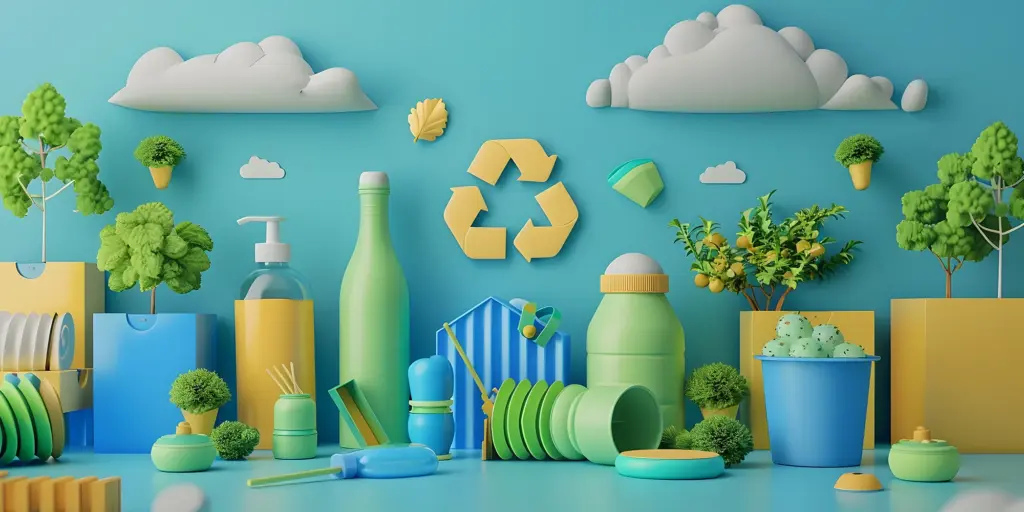Product teams are using AI-powered Life Cycle Assessment (LCA) to rethink how sustainable design gets done. As sustainability becomes a core commercial business driver, traditional LCA methods, while essential for robust environmental analysis, can be difficult to apply early in fast-paced product development. This article explores how AI-driven LCA tools streamline data handling, forecast impacts earlier and plug directly into design workflows, driving faster decisions and stronger product outcomes. As environmental concerns rise on the global agenda, embedding sustainability into design isn’t optional, it’s a strategic and ethical obligation.
“If you can’t measure something, you can’t understand it. If you can’t understand it, you can’t control it. If you can’t control it, you can’t improve it.” – H. James Harrington
Why Life Cycle Assessment (LCA) matters for sustainable product design
Life Cycle Assessment (LCA) is a method for evaluating the environmental impact of a product from raw material extraction through manufacturing, use and end-of-life disposal. More advanced LCAs may assess cradle-to-gate (from resource extraction to factory gate) or cradle-to-grave (including product use and disposal).
When used effectively, LCA helps product teams:
- Identify environmental hotspots
- Compare materials and processes
- Make informed design choices that reduce footprint and risk
Traditional LCA tools remain essential for comprehensive sustainability evaluation. However, they often require extensive datasets, expert interpretation and detailed analysis, which can be challenging to apply during early-stage design or in rapid iteration cycles.
The three biggest challenges of traditional LCA
1. Data overload: Environmental data is complex to source, validate and manage at scale.
- Expertise gap: LCA often demands specialised knowledge in environmental science, materials and industrial processes. These skills are not commonly found in every design team.
3. Timing mismatch: Traditional methods can be difficult to align with fast prototyping or agile development.
How AI improves LCA efficiency and speeds up sustainable product development
AI-powered LCA software addresses the core limitations by complementing traditional methods and delivering faster, earlier environmental insights at scale. Here’s how:
1. Automated environmental data collection & prediction
AI streamlines data workflows by automating the gathering, cleaning and structuring of environmental inputs. Machine learning models can fill gaps by predicting missing values with high confidence, dramatically reducing manual effort.
2. Impact forecasting in early design stages
Even with limited data, AI-powered LCA models can estimate environmental impacts using historical datasets and product archetypes. Designers and engineers gain real-time guidance, right from the concept phase, and before costly decisions are locked in. Some platforms now use generative AI to suggest lower-impact materials or redesign concepts, drawing from product archetypes, environmental databases and performance constraints.
3. Real-time scenario analysis
Need to compare multiple suppliers, materials or manufacturing routes? AI enables rapid simulation of lifecycle impacts across different configurations, making it feasible to run cradle-to-grave assessments on-the-fly. This includes moving beyond cradle-to-gate models and incorporating full cradle-to-grave assessments, capturing impacts across the entire product lifecycle from extraction to disposal.
4. Embedded feedback in product design tools
AI-driven LCA platforms increasingly integrate with CAD and PLM systems. Designers can view sustainability metrics, such as carbon intensity or water usage, directly in their workspace. For example, while selecting a material in CAD, a designer could receive instant feedback on its environmental impact, enabling more informed trade-offs.
Business benefits of AI-driven LCA software
Embedding AI-powered sustainability tools directly into product development workflows creates tangible commercial and environmental advantages. Product teams can bring new concepts to market faster by accelerating sustainability analysis and enabling early iteration. Automating labour-intensive tasks reduces operational friction and cost. With earlier access to environmental data, teams can make smarter design trade-offs that balance performance with impact. AI-driven LCA also helps organisations stay ahead of evolving global requirements, from carbon reporting and ESG disclosures to supply chain transparency. Just as importantly, it signals leadership: companies that prioritise sustainability not only earn trust from regulators and investors but also strengthen their competitive positioning in an increasingly impact-conscious market.
Common barriers to AI-powered LCA adoption, and how to overcome them
Adopting AI-enhanced LCA isn’t just a technical upgrade; it requires strategic alignment across teams. Key considerations include:
- Data quality: AI models are only as reliable as the data they use. Ensure access to validated, up-to-date environmental and supply chain data.
- Cross-functional collaboration: Successful implementation requires product teams, sustainability experts and engineers working together, not in silos.
- Tool integration: Select platforms that integrate easily with your existing CAD, PLM or ERP systems.
- Tool selection criteria: Evaluate LCA software for its transparency, interpretability and compatibility with your product development tools. Prioritise platforms that provide auditability and clear model logic to support expert review.
- Expert oversight: While AI accelerates analysis, it cannot replace human judgment. Experts are still needed to validate assumptions, contextualise trade-offs and ensure results align with product intent and regulatory standards, particularly in novel or complex design cases.
The future of AI in sustainable product development
AI’s role in LCA is just beginning. As models improve and industry-specific datasets become more robust, expect to see:
- End-to-end automation of lifecycle modelling across entire product portfolios
- Dynamic risk forecasting to keep pace with regulatory shifts
- Real-time benchmarking against sustainability performance of peers and categories
But AI is not a substitute for expertise. These tools augment expert insight, they don’t replace it. The biggest risk for organisations is waiting too long to start.
Conclusion: Design smarter, lead with sustainability
We opened with Harrington’s words for a reason: Measurement enables understanding. Understanding enables control. And control enables improvement.
AI-powered Life Cycle Assessment empowers product teams to measure earlier, understand faster and improve constantly, without slowing development or sacrificing creativity.
Design smarter. Move faster. Lead sustainably.
With AI-powered LCA, sustainability becomes a lever for innovation, speed and long-term competitive advantage.

